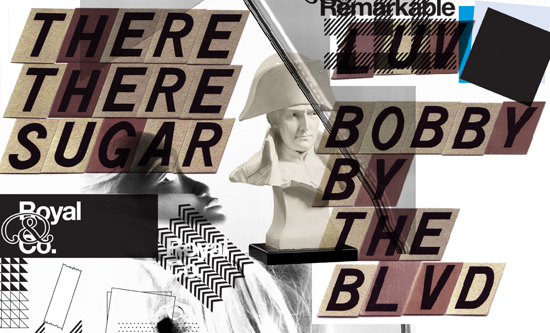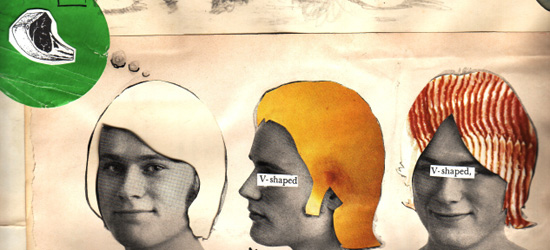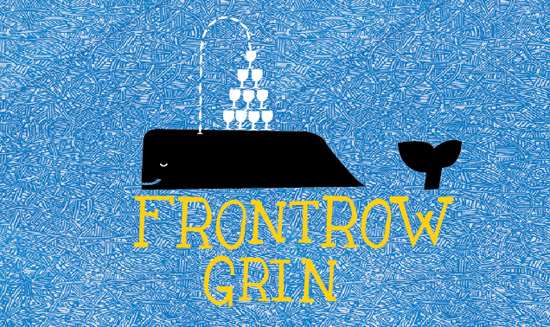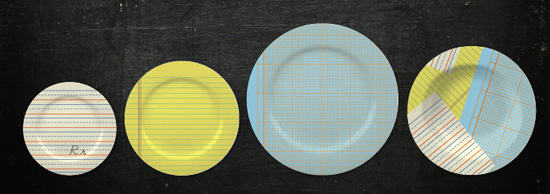SpearTalks: Joshua Gajownik

The creative industry: Yeesh. On one hand, working in it can result in the most un-careery of all careers; an endlessly fulfilling extension of what you love into what you do. On the flipside, that same industry can be the ultimate soul-smoosher; a creativity killing monster leaving utter suckness in its wake.
If you’ve worked in it, chances are you’ve experienced both sides of it. The ideal client, the idol client, the client that shouldn’t even be a client because they should be out of business; they’re everywhere, and we’ve each developed our own way to deal with them. But when times get rough, we need reminding of why we’re in it in the first place– and when we need reminding, we need Joshua Gajownik.

Joshspear.com: Ok Joshua – I know you started grown up life as an astronautical something. Tell us what else we should know.
Joshua Gajownik: Well, I was hoping to start grown up life as an aerospace engineer. Love planes. Always have. But after two years of studying aerospace, well– there was a lot of math, which is one of my least favorite things. And I don’t think it would have been safe for anyone to fly on any plane I had worked on! I was raised artistic, so I got back into it studying design. Great decision. Now, one of many dream projects would be to get some graphics on an airplane.
JS: “So much drama in the L.H.C”… so you’re saying you’re still into space?
JG: So much drama in the L.H.C….I am indeed still big into space. I’m a Discovery Channel dork. I love science. It’s pop culture to me. BBC Horizon series, yep. If you haven’t seen “The 6 Billion Dollar Experiment” episode, YouTube it– the cinematography is stunning. I’m really enjoying SEED magazine as well. Their writing is phenomenal. They ran an article entitled “What happens when science is made in China?”. A great combination of words. An absurdly simple question, but when you think about it, a really intriguing challenge.
I consider my work “nonscience.” Inspired by the natural and hypernatural, the wonderful and weird, but by no means grounded in any kind of graphic formula. My work shifts shape and medium depending on the design problem at hand, but words play a huge role in most of what I do. They spur the initial thought for me.

JS: Judging by your work, type seems top be a top passion for you. Is that the truth?
JG: Working in branding, it’s very clear to me that developing a unique identity is directly linked to a differentiated voice. They support each other. I’ve had the opportunity to work with some really authentic and original brands who are in tune with their voices, not just their look. For Burton I worked on the identity and campaign for last years Amateur Tour. Burton says things others won’t. So I started with words. For an amateur, it is encouraging to know that Shaun and Terje and Hannah all started in the same place as you: On their asses. So the campaign was simply “everyone starts out on their ass.” I wanted to set up a best bruises competition but time didn’t really permit!
On the applied side of type, I studied letterpress at the University of Reading in England. That summer was hugely influential for me. Seeing liquid metal being made into type. Laying out 10 point Gill Sans by hand, backwards, spell-checking it, appreciating each and every letter. Learning the rules, because breaking them isn’t the real challenge.
JS: Wait, you came up with the “Everyone starts on their ass” line?
JG: Yep that was where it started: The words. Going all the way back to my first time on a board, planting my face in the snow, bruises on my ass. I remember the board was like 35 bucks and it was pointed on the front and flat on the back. Funny what stays with you. I live in the Carolinas now and we haven’t seen snow in years. When it comes time for vacation I head for the snow, not the beach.

JS: This is personal opinion, but it feels like companies like Burton – ones that are comfortable with communicating the straight, user-driven realities of their products – are building the strongest brand relationships these days. You seem to agree with that. Why do you think so many other companies are too scared to really incorporate their user’s experiences into their brand story?
JG: When it comes to brand, you’ve got to be authentic. Marketing and advertising are very powerful tools. But they can also be very misleading tools. Consumers are so informed today. Forget your flash websites and celebrities and viral campaigns and all that stuff. Get down to the core of what it is that you do. The experience of using your stuff. Create communities of users. I think that’s what Burton has done well. A true original that understands the power of community. That’s what I wanted to embrace with the Amateur Tour campaign. Gives a sense of place in the snowboarding world; something to share with each other that is a right of passage every snowboarder experiences.
I think some brands don’t understand their audience. And I think some are obsessed not with experience, but with product. Product is one part of experience, but not all of it. You’ve got to have a clear mission behind all that you do. Without that, it’s kind of hard to steer.
JS: So, you’re a know the rules before you break them kind of guy. Tell me more about that, because I sort of need the lecture.
JG: No lecture here! It’s a respect thing. You don’t have to agree with the rules. I’m not even sure you have to know all of them. But an appreciation for what has come before you is paramount. My time in England really reinforced that. The University had a huge ephemera collection and we’re sitting there holding books from the 16th century. I’m by no means a craftsman like that, but you have to keep your hands on stuff. Screen print, paint, letterpress, sculpt, book bind, make a mess. Whatever it is, that’s where we started. My first piece: Dukes of Hazzard coloring book circa 1983. Finger-painted, totally outside the lines.

JS: Lets talk about RoyalRemarkable as a product. What’s the “clear mission” behind all that you do?
JG: In everything I do, I want to be a communicator. I think that entails many things, including design and writing. But also curating, facilitating conversation, and educating people as to the value of design. To be honest, I enjoy writing a good email or talking about this stuff almost as much as I enjoy the making itself. I like getting people on the same page because when you do, you will feel it in the work. So will your audience.
JS: It sounds like working with Burton has been an amazing experience for you. Aside from them having a great understanding of their brand and their audience, what has made it so wonderful? In other words, what makes the perfect client?
JG: I’m always looking for clients who see designers as problem solvers. There will always be prescribed items which must be designed and those are absolutely essential. A logo, an ad, a poster. But above and beyond that, a client who values me knows there is so much more that can be achieved through the design process. I think because I don’t necessarily have one style that I rely on, I must genuinely be in tune with each client’s needs. Maybe even needs they don’t know are there.
I’ve had experiences where I’ve been asked to repeat something I had previously done — “can you make it like that thing you did here” — but I find that doesn’t really benefit anyone. I think it works really well for illustrators, but not as much for designers. That said, the line between the two is blurring, which has been really influential to me. So if a project would best be delivered on with painting or illustration, I’ll be the first to get my hands dirty. Or maybe it’s a curated photo with meaningfully placed type. I’ll get out the Holga. It gives me some really interesting opportunities. You know, an interior for Ogilvy, a painting in my living room, dinnerware designs for a boutique, a cover for an EP. No two are the same.

JS: You’re really inspired by brands and new mediums, etc., but every creative type seems to have those moments where you just feel…jaded I guess, like you really wonder if you’ll ever be able to look at Futura again. What do you do when you feel like that?
JG: When I am having one of “those” days, normally some painting, opening up my windows, a couple cheeseburgers, and a new pair of socks helps. I take a step back and make sure I’ve got some perspective on what I do. Balance. Travel is absolutely motivational for me. I’m fortunate that in the last year I’ve had some great trips for work to Singapore, Tokyo, Beijing, Boston, and an awesome vacation to Alaska. I work out frequently and am pretty into sports. My life was pretty much hockey before college. Now, I spend a fair amount of time biking here in Raleigh. That’s really when I learn to appreciate this place and see all the stuff you miss in cars. It’s so green here.
JS: Tell me about what you’re working on right now, and maybe about some projects that you’ve always wanted to start but haven’t gotten around to yet.
JG: Right now, I’ve got a big painting of London going. I go through phases of fine arts. But biggest on my list is trying to find a vendor for these plates I’ve designed. They’re “paper” plates, but ceramic. They’ve been really well received by individuals and shops alike, but finding the right people to produce them is key. Evaluating vendors now.
In the future there are a couple freelance things I’d like to get into more: interior design, curating spaces. I do it kind of informally right now for a couple different places. I’d also like to try my hand at editorial illustrations for some of the mainstream magazines I really adore. Again, getting back to voice, I love the first page of most articles. And finally, I’ve got a bunch of ideas I’d like to pitch to Nike and adidas sometime.
